Catmint does attract cats but it is nowhere near as appealing as catnip.
Catmint only tends to attract cats if they are close to the plant and not all cats will be bothered by catmint – many are indifferent to it.
Cats that like catmint will often flatten the plant with their excited playing and rolling.
Contents
Why Are Cats Attracted To Catmint?
Catmint contains a component that attracts cats called nepetalactone, the same component that is found in catnip.
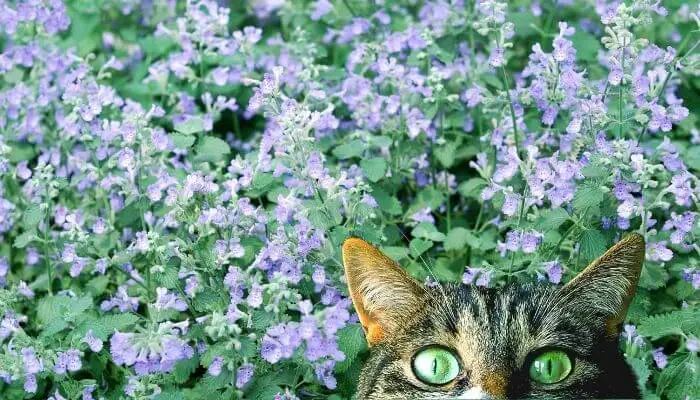
There is not as much nepetalactone in catmint but it is enough to catch a cat’s attention as they walk past.
Due to the low nepetalactone content, a cat has to be very close to the plant in order to be affected by it.
When cats show interest in catmint they tend to roll around in the leaves rather than eat them. Fortunately, catmint is a hardy plant and can continue to grow even with the occasional attention from cats.
How Does Catmint Differ From Catnip
Catmint and catnip are both from the same plant family but there are a few key differences, particularly in the way cats react to the plants:
Catmint
Catmint is a herb but is considered an ornamental plant too thanks to its attractive appearance.

Some cats are attracted to catmint but it is nowhere near as appealing to them as catnip. Some cats seem indifferent to the plant, especially if there’s something more interesting nearby (such as catnip).
Cats that do like catmint seem to enjoy playing and rolling in the plant rather than eating it.
So if you have cats and you’ve planted catmint, there’s a good chance your catmint will be flat half the time.
Catmint is a beautiful plant, it has smaller leaves than catnip and blooms with bright purple-blue flowers in late spring to the middle of summer.
Catmint is also a natural insect repellent and is edible too, with a mild minty taste.
Catnip
Catnip is preferred by cats thanks to its higher nepetalactone content.
Cats will eat catnip, as well as roll around in it.
For most cats catnip is irresistible which is why they love catnip toys.
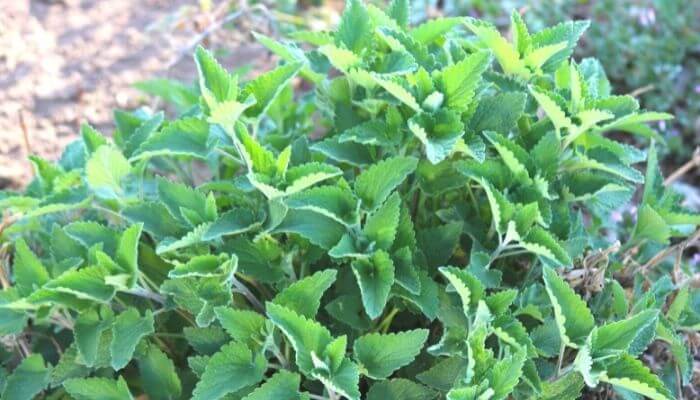
This greyish-green plant has a weedier appearance than catmint, it has large leaves and small white flowers.
Catnip grows taller and wider than catmint and it also grows quicker.
Cats often want to eat catnip but the smell alone can also cause the euphoric feeling and the amusing behaviours that go with it (running around, rubbing, rolling, and being generally excited and playful).
The effects can last 10-30 minutes but not all cats react to catnip in this way.
If you have catnip and catmint in your garden, you’ll probably find cats are attracted to the catnip and ignore the catmint.
Both of these plants are non-toxic and safe for cats to be around and consume in small amounts.
How To Protect Catmint From Cats
Here are 3 simple ways to protect catmint from cats:
- The best way to protect your catmint from cats is to position it in an area where cats cannot reach it. A good example of strategic catmint placement would be in a hanging basket.
- Another thing you could do is plant catnip in another part of the garden. The catnip is far more appealing to cats and has a stronger aroma so it will help keep cats away from the catmint and the rest of the garden.
- Create a barrier when planting the catmint to keep cats away. When you first plant catmint, nepetalactone is going to be released due to leaves or roots becoming damaged in the planting process. This aroma can attract cats over to the plant so it is a good idea to create a barrier that will keep cats away for at least the first few days.
This could simply be a case of covering the plant with a cut-off plastic bottle or using chicken wire to make the plant inaccessible.
Protecting your catmint for the first few days gives the plant the best chance.
After 4-5 days the aroma will have faded and cats won’t be as attracted to the area.
Catmint Alternatives That Don’t Attract Cats
The beautiful plants listed below make excellent alternatives to catmint.
If you have a cat, be careful with which plants you use as some of the ones listed are toxic so are best suited to pet-free homes.
- Lavender – this popular, aromatic plant has beautiful purple/ blue colours so is a good alternative to the purple-blue catmint. Lavender is toxic to cats so it tends to be an effective deterrent as the strong smell keeps cats away.
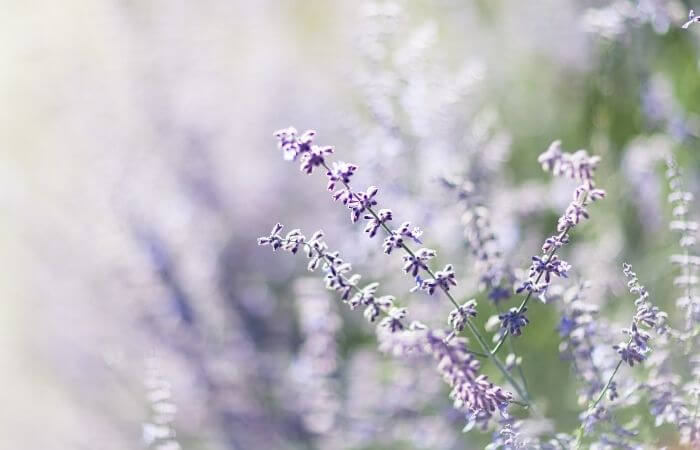
- Lupins – Lupins are border plants that flower brightly in summer. They are a bold plant that are available in a wide variety of colours. This plant is poisonous to cats so it shouldn’t be planted if you have cats.

- Echinacea – this is a colourful perennial that attracts butterflies and bees. These plants are safe for cats but they do not attract them so you can enjoy beautiful colours in the garden without worry.
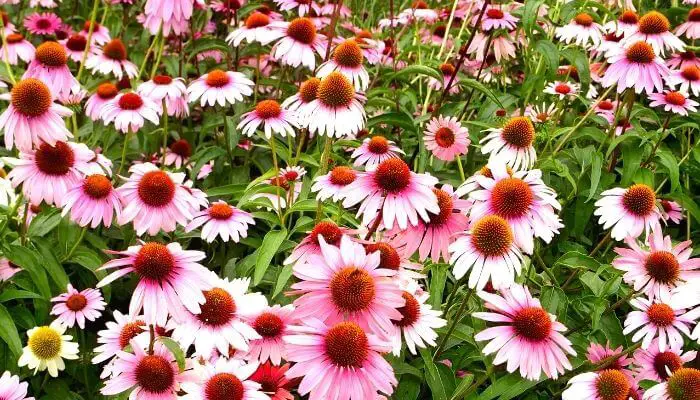
- Geraniums – These are bright, easy-care plants that are available in a range of colours. Geraniums are a common plant to have in the garden but be aware that they are toxic to cats.

- Pennyroyal – this plant has a peppermint smell that makes a pleasant replacement for catmint. Cats tend to avoid this plant because of its strong aroma.
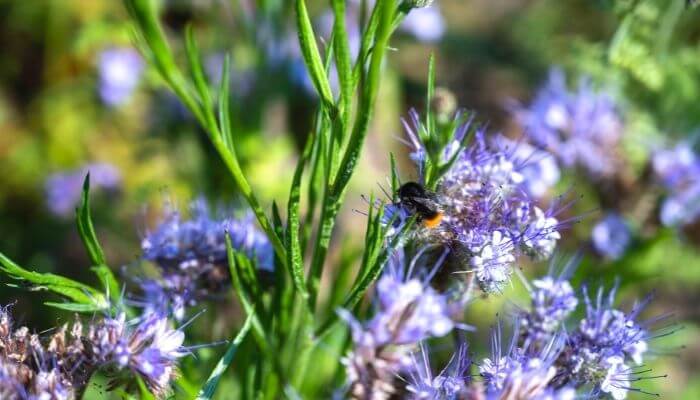




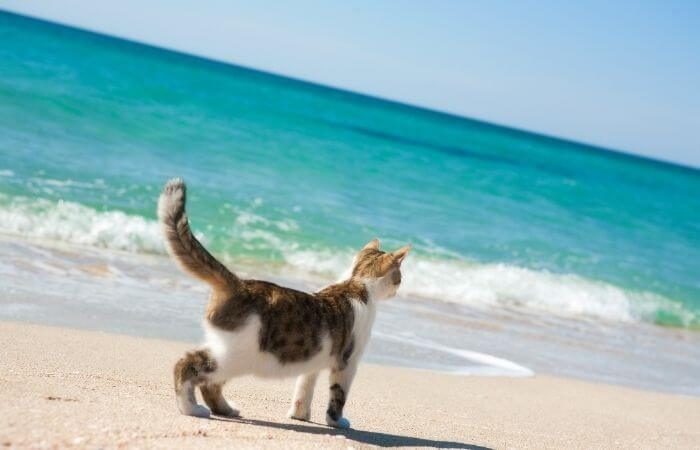
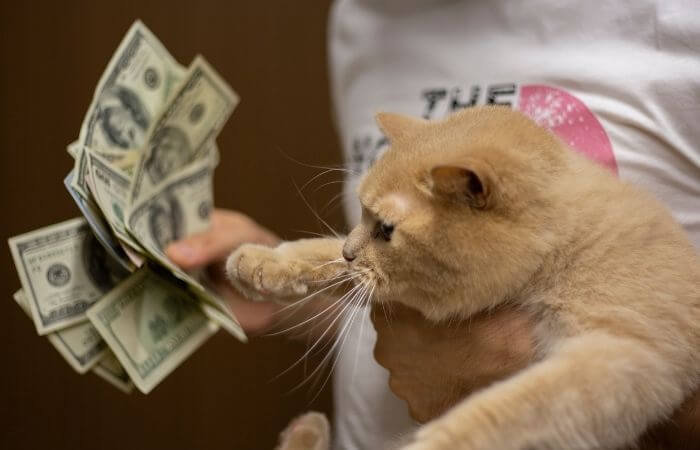

Leave a Comment